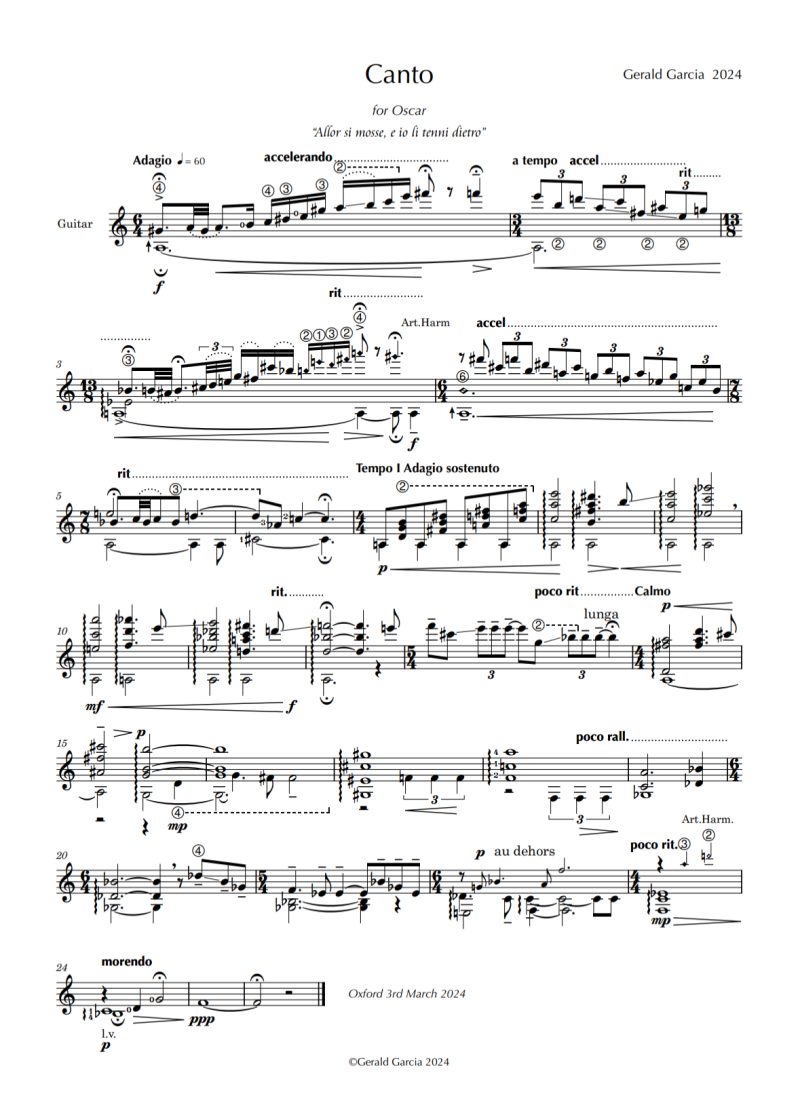
For Oscar



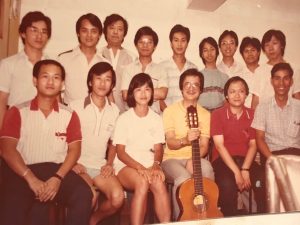
The HK Classical Guitar Society ca.1981 – Mr.Ho is second from the left in the front row. Also present are Pepe Yeung, Simon Cheong Hing Liu, Edgar Chu, Stephen Kai Leung Chau, Ricky, Wilson, Summer Chan,Ng Ho Yi, Mr.Wong, Ngai Kai Tai Thanks to Bunny Leung for the photo
Hong Kong 1979-85– a group of enthusiastic amateur guitarists which met in a small shop in the Jordan area of Kowloon showed up at my first recital in my home town. They seemed well organised, and were hungry for any information and music that was out there. It appeared that the shop belonged to a Mr.Ho, who allowed local teachers to use it and have their regular meetings. This was the Hong Kong Classical Guitar Society.
They were very kind and also friendly towards each other and towards visitors, so I made a point of keeping in contact on my regular visits and annual concerts. I discovered that there was also a connection with China – the society’s newsletter was sent regularly to contacts and teachers in disparate provinces.
The big name in China was Professor Chen Zhi, who had a reputation for producing wonderful players, but the growing number of classical guitarists in China wanted information – sheet music, recordings, videos…
The HK Classical Guitar Society grew into the HKGIA (Hong Kong Guitar Information Alliance) which involved the burgeoning number of guitar teachers in Hong Kong, expanding the reach of the society to include all types of guitar interest – flamenco, baroque, nail players and no-nail players.
It was in this group that I first became aware of Kenneth Kwan, a student of the erudite Richard Szeto. It was also this group which made the links with Professor Chen Zhi that enabled John Williams and me to visit Hong Kong and China in 1995.
Prior to this visit Professor Chen Zhi organised The First China Artistic Guitar Festival at Zhuhai, China in 1987.
It was a very important event and has had a big influence on the development of the classical guitar in China.
Before this event Professor Chen Zhi had visited the HK Classical Guitar Society (and Mr. Ho) to invite local players to perform in the Festival.
Some HK players performed in the China Artistic Guitar Festival 1987.
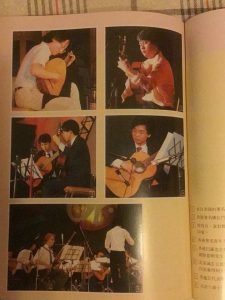
None of us realised then what an explosion of classical guitar activity in China would result from John Williams’ and my visit in 1995 which was promoted by the British Council.
Most of today’s guitar professors in Chinese conservatoires were present at the concerts and masterclasses which John Williams and I gave.
Professor Chen Zhi has been instrumental in bringing his students to the west, and some of his ex students (and their students in turn) are now bright stars in the universe of the guitar.
I like to think that it all started in that small shop in Jordan, with a group of likeminded enthusiasts back in the early 80s. It should come as no surprise that we have kept in touch even though we have gone our separate ways.
In a world where thinly disguised self promotion seems to be the norm, it is refreshing to come across true enthusiasts who modestly make things happen which have far reaching implications.
Here is a meeting in a Hong Kong in a coffee shop – a meeting of old friends who hadn’t met up for almost forty years and still don’t know how to stop being enthusiastic!
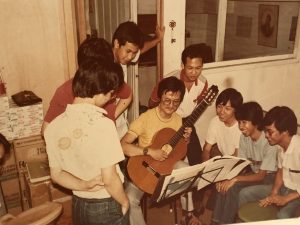
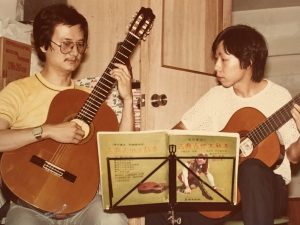
Teaching Bunny (Leung Shui Pun)
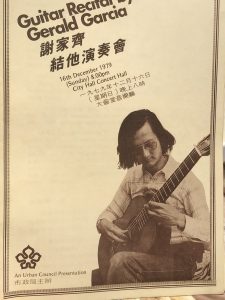
My first recital in Hong Kong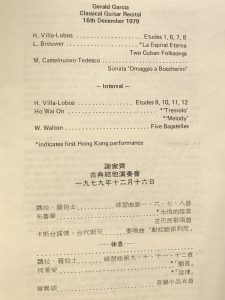
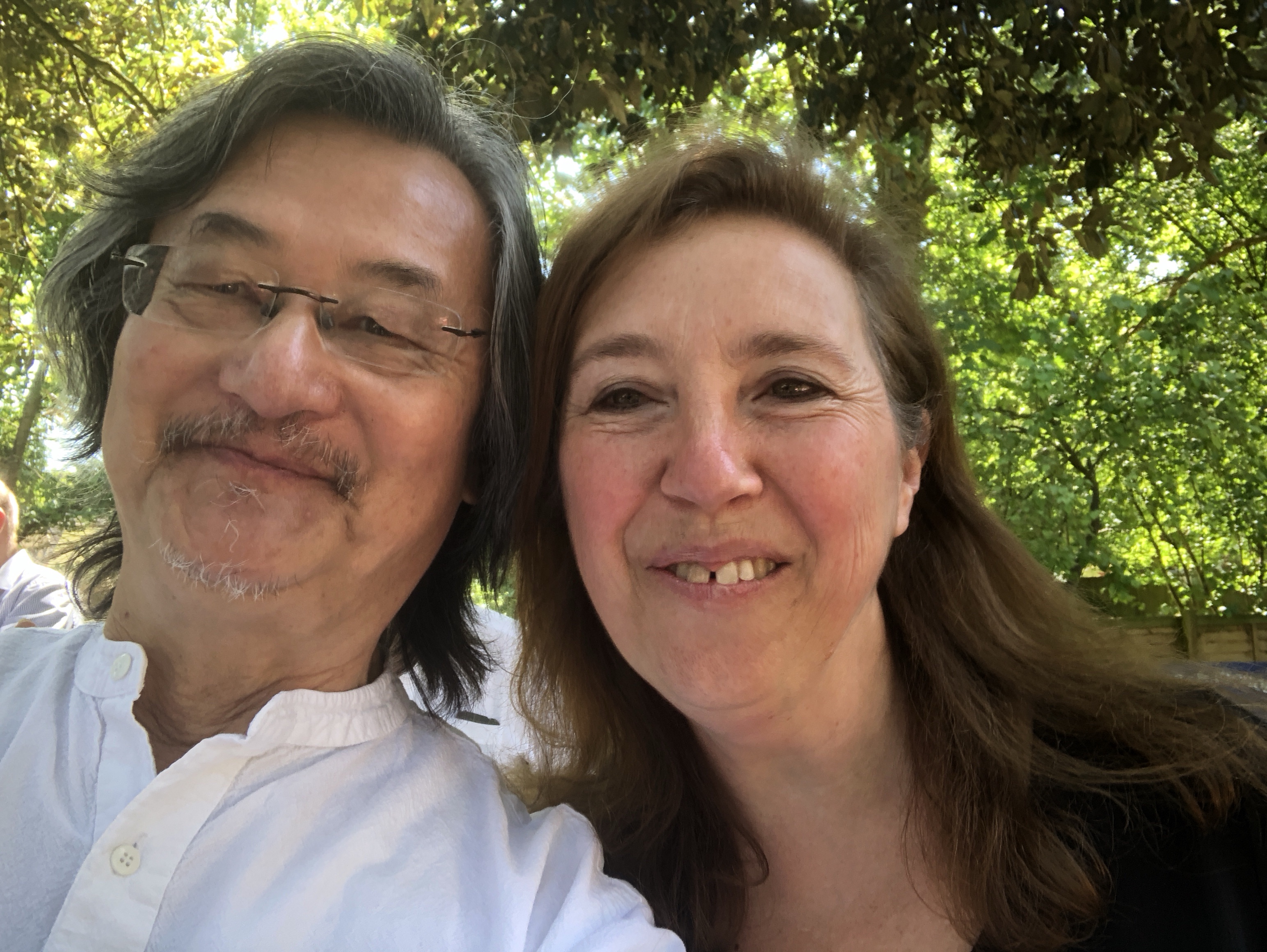
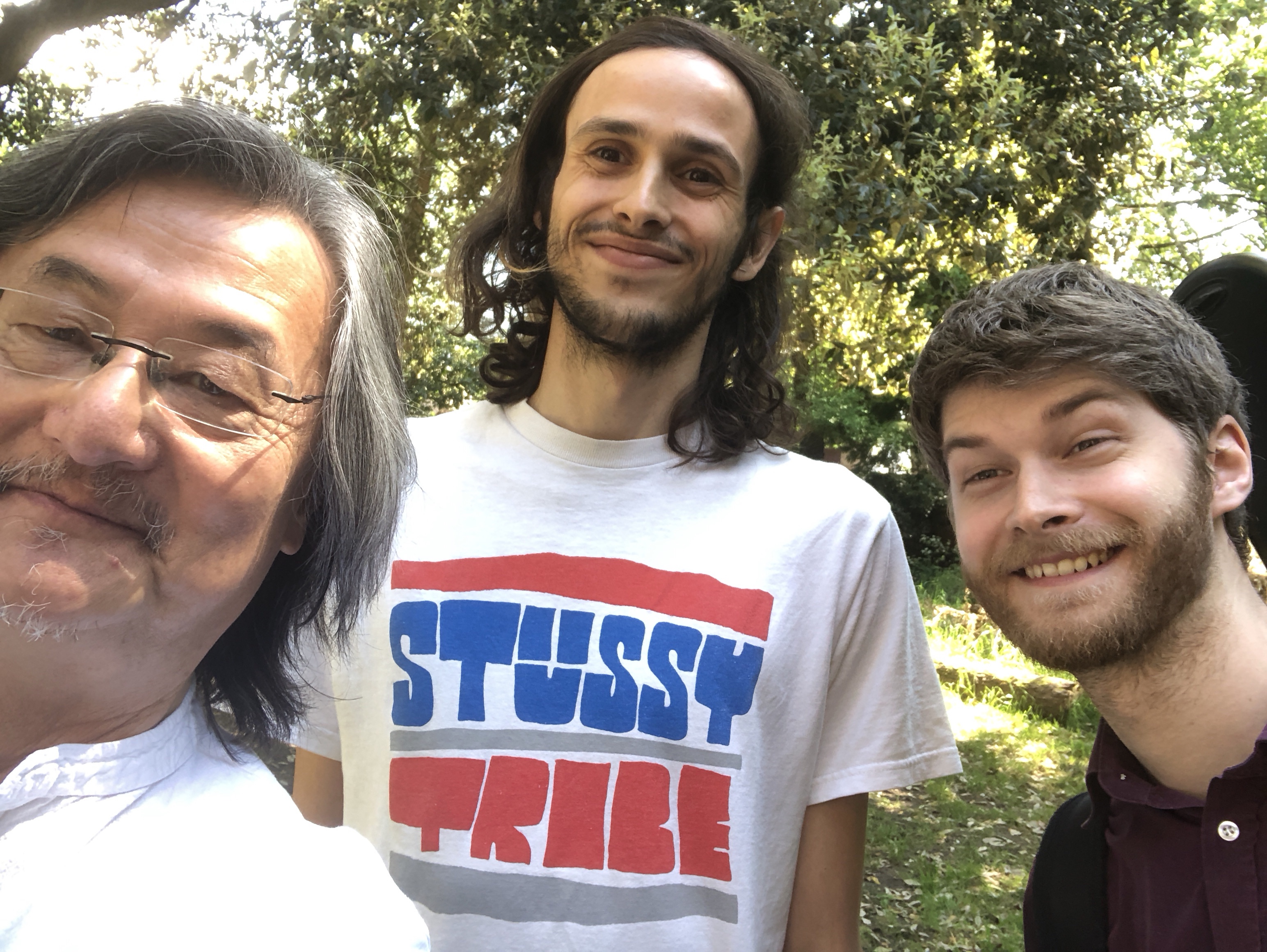
The tour
https://vickersbovey.co.uk/concerts/sgen-tour-utrecht/
Many thanks to Steve Greenslade and the OGS for making this such a memorable occasion!
We had a great time afterwards at the Tree Hotel in Iffley – it was a beautiful summer evening and the SGEN barely made it back int time to Oxford station to catch their train for their concert in London the next day.
I had a chance to chat to Susana, with whom I had a lot in common.
She believes that music connects us and that all cultures, ages and abilities have a common voice through this.
The Ensemble is made up of students and ex students of hers, some of whom are not professional musicians. They do not receive a grant and so feel free to play the repertoire they love.
Their enthusiasm and sense of belonging is infectious and evident in their performance.

Sean Shibe
Sean came to the shed to play a preview of his Aldeburgh concert and CD recording last year. His programme was interesting as usual, starting with Forlorn Hope by Dowland and ending with Nocturnal by Britten, with Malcolm Arnold and Walton in between.
I had the chance to talk to him about his work as a New Generation artist with BBC radio 3, his attitude to competitions, and his idea of a good programme .
This was a welcome opportunity to catch up with Sean, whom I have known since he was a 13 year old in NYGE.
I was also present at his outstanding performance in London when he won the Royal Overseas League competition, ahead of an oboist, a singer and a pianist.
Here is a link to his Youtube channel where he shares his often individual view on the world and some fine performances, and here is our interview in the shed.
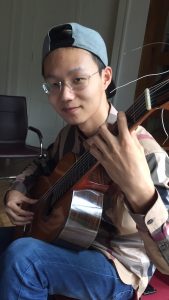

17-year-old Junhong Kuang is widely recognized as one of the greatest young talents in the world today. He began receiving professional training in classical guitar at the age of nine with Professor Xu Bao in Chengdu, China. Only two years later, he won first prize in the Thailand International Guitar Competition, and soon after he was awarded a prize for the best interpretation of a Spanish piece and also for his interpretations of Bach’s “Chaconne” at the Iserlohn International Guitar Competition in Germany.
I met Junhong again last May in Baltimore, where he is studying with Manuel Barrueco.
Before that, I had been teaching him on and off, and recorded his CD for Naxos when he was 13 years old.
This is the interview we did
I worked with him on his ARD programme in Iserlohn under the auspices of his former teacher, professor Xu Bao
Here is his ARD semi final, playing Tedesco’s Quintet
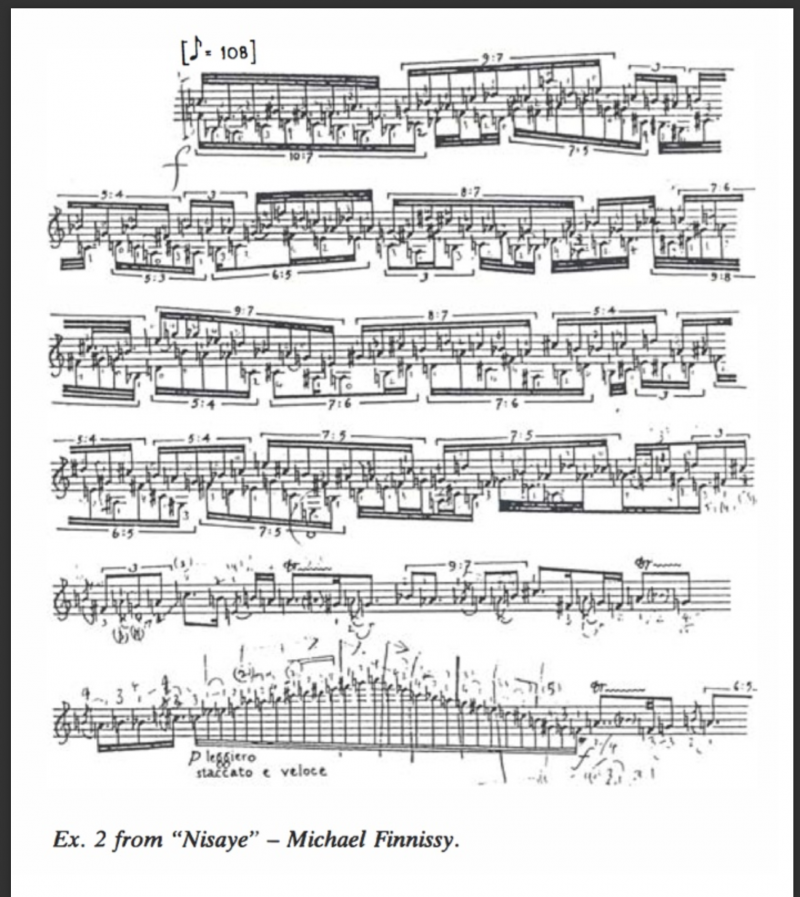
Just a bit of history – the Huddersfield Contemporary Music Festival used to have composition competitions, and the year I played there, the compositions were all for guitar.
The thing is, not all entries were in until the week before, and I had to play them all – some at sight. This was an entertaining experience and pieces ranged from graphic scores to pieces which were purposely impossible!
Anyway, here is a review from Classical Guitar magazine such as it was in those days (when it was published in the UK).
As well as the winning entries, I played ‘Nasiye’, written for me by Michael Finnissy, ‘Monogram’ by Gilbert Biberian (I gave the first performance in the Wigmore Hall), Tippett’s ‘The Blue Guitar’ and ‘Parabola’ and ‘Decameron Negro’ by Leo Brouwer.
That was just for starters (just kidding). The audience was large and appreciative unlike my earlier concert which I played at a nearby Guitar Society a few days before and was met with a prize comment from the secretary – “That was OK, Gerald, but I was hoping you would play ‘Recuerdos'”!
Here is the text of the review – the pdf is below
from Classical Guitar July 1986
GERALD GARCIA and NEW GUITAR MUSIC at HUDDERSFIELD
by Richard Leigh Harris
‘A contemporary music festival? In Huddersfield?’, a colleague asked, frowning deeply.
Admittedly he wasn’t a new music buff, but that comment demonstrates well enough the general reaction by musicians to developments in the music of their own age, as well as to the all- too-familiar clichéd images of Northern industrial towns and cities, perpetuated by
numerous jokes and snide asides.Since its modest inception in 1978, however, the annual Huddersfield Contemporary Music Festival has ‘taken off’ to a degree hardly envisaged in the early days by its Artistic
Director, Richard Steinitz, a lecturer in the music department at the Polytechnic. Indeed,
within the last few years and despite quite heavy financial difficulties, Huddersfields’ annual gathering now very much bears all the hallmarks of enlightened, stimulating
programme planning and excellence of execution that makes it in many areas a serious challenger to the major European festivals of new music such as the Venice Biennale, Royan, ISCM, etc as well as those promoted through or via college campuses in the
United States. This international quality and ambience was reinforced at the last, 1985, festival by the presence of leading Italian figures of the eminence of Berio, Aldo Clementi, Salvatore Sciarrino (the latter two names relatively new to British audiences), Bussoti, Donatoni plus the ltalian- influenced Englishman Bernard Rands, now resident in Boston, Mass. Jonathan Harvey and Michael Finnissy completed the list of featured composers
who during the eight days of intense activity (19-27 November) talked informally about prospective performances of their pieces, directed student workshops, adjudicated and were on hand generally to give advice and point the way forward.An incidental aspect of the 1985 festival was the presence of the ‘Oxford connection’ in the form of guitarists Gerald Garcia, David Harvey, ex-Abingdon composer Jeremy Pike plus the present writer who travelled up from Oxford with Gerald Garcia and pretty well, in the words of the late Philip Larkin ‘. . . waking at the fumes/And furnace-glares of Sheffield where I changed/And eat an awful pie . . although not so many furnaces these days and
more of a stale BR sandwich than a pie .Gerald Garcia was invited to Huddersfield in a twofold context: giving an open guitar workshop on pieces submitted for the Yorkshire Arts Association Young Composers Competition, plus a late-night recital held in the Huddersfield Art Gallery and sponsored by W. H. Smith.
At the risk of preaching to the converted, the following points are perhaps worth restating.
Until Julian Breams’ policy and, indeed, advocacy of commissioning new works from leading composers expressly for the solo guitar, this most subtle and intimate of solo instruments went neglected and unsung as far as new pieces were concerned (see Classical Guitar, Feb/March 1986). Since the major mid-Sixties landmark of Britten’s Nocturnal and the subsequent flow of works from established figures such as Walton, Henze, Maxwell Davies, Richard Rodney Bennett and, most recently and importantly, Sir Michael Tippett and Elliott Carter (‘Changes’ for David Starobin), at long last the guitar is
now being seen by living composers as a viable instrument for which to write, as well as a challenge to produce music which is still recognisably composer X’s while being ready and willing to respond to the technical, syntactical idiosyncrasies of the guitar. Perhaps above all, new music for the guitar is now taken seriously and no longer (thank God) relegated to the fourth division of so-called aesthetical ‘good taste’.
[gview file=”http://geraldgarcia.com.c51.previewmysite.eu/WPress/wp-content/uploads/Classical-Guitar-GG-at-Huddersfield-1985.pdf”]

On Monday, May 18th, 2015, at a ceremony at Yale School of Music, Naxos Chairman and owner Klaus Heymann was presented with the prestigious Samuel Simons Sanford Award. Previous winners include Yo-Yo Ma, Mstislav Rostropovich, Isaac Stern, Alfred Brendel, Emanuel Ax, Marilyn Horne, Sherrill Milnes, Aaron Copland, Pierre Boulez, Sir George Solti, Eugene Ormandy, and Juilliard President Joseph Polisi.
Read More
I have known Klaus for many years – my first recording was with his wife, violinist Takako Nishizaki in 1985 – it is a collection of Chinese melodies for violin and guitar. This was first issued as an LP on HK Records and subsequently reissued on the Marco Polo label.
We recorded at the Gulbenkian Institute in Lisbon, and I have fond memories of Klaus helping to carry our bags so we wouldn’t damage our hands! I mention this because, since those days, Naxos was founded and one of the guiding lights in the selection process has been Takako.
Since then, I went on to record several CDs for Naxos and have recently produced a CD in China of the prodigy Kuang Junhong.
Naxos has gone from strength to strength and is a pioneer in the streaming of classical music via the Naxos Music Library. They now also have the ability to print CDs in smaller quantities and are establishing a classical music database.
Of course, this isn’t the first time Klaus Heymann has won an award, but he is particularly proud of this one.
Recently I was in Hong Kong, and had a chance to talk to Klaus about his latest award, his attitude to recording and digital distribution, and Naxos’ importance in the promotion of the classical guitar.
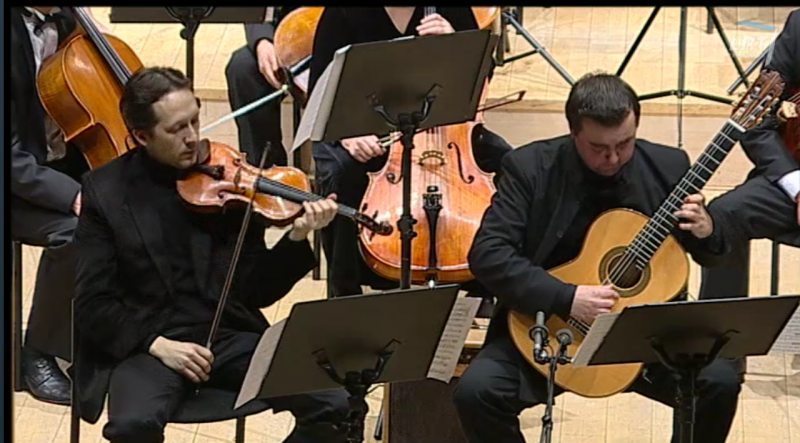
In 2002, I was invited to write a concerto for the Christée-Baldissera violin and guitar duo. This was performed in the German town of Bad Munder.
I finished the piece in a couple of weeks and heard nothing from the duo or the conductor for weeks. Jeanne Christée requested a more virtuosic final movement which I rewrote as a tango and battle between the soloists and the orchestra!
Finally I received an invitation to attend the concert and worked out how get to Bad Munder.
It was quite a journey, compositionally and geographically.
Alison and I got off a train at Bad Munder to find the station was in the middle of the countryside with no clue as to where the town was. Far away on the horizon there was a steeple, so we headed out towards it across snowy fields. It was indeed the town, but there was absolutely no one around.
I had never heard the duo and luckily they had the music down to a tee despite problems with the guitar amplification. We spent the rest of the day wandering around the snowy ghost town. It was beautiful, with traditional north German wooden houses.
In the evening, there were suddenly hundreds of people attending the concert – where had they all come from?
Many years later, my friend Sergej Krinicin of the Baltic Guitar Quartet asked if he could play the piece – he had a duo with the violin virtuoso, Vilhelmas Cepinskis.
Vilhelmas wanted the concerto rewritten for symphony orchestra, but it was originally conceived for strings! We finally agreed it should be played in its original form, and the concert was given in February 2013 but the Lithuanian State Symphony Orchestra conducted by Robert Bokor.
This was a big concert which was televised, and I managed t get an audio recording of the whole piece.
Here is the middle movement:
Here is the audio of the complete concerto

A date for your diary –
Friday 25th July – 7.30pm
THE CHURCH OF ST JOHN THE EVANGELIST
109A Iffley Rd, OXFORD OX4 1EH
Here is a video of NYGE at Easter
Video by Sophie Standford
National Youth Guitar Ensemble, Easter Concert, April 2014
Anton Arensky (1891-1906) Variations on a theme of Tchaikovsky arranged by S. Gordon
Performed at The Menuhin Hall, Stoke D’Abernon, Surrey, UK
Musical Director: Gerald Garcia
Last Year with Belinda Evans
Gerald Garcia conducts the National Youth Guitar Ensemble with Belinda Evans in his “Four Hebridean Songs”. Easter 2013
The National Youth Guitar Ensemble
& Vida Quartet
Friday 25th July – 7.30pm
THE CHURCH OF ST JOHN THE EVANGELIST
109A Iffley Rd, OXFORD OX4 1EH
www.sje-oxford.org
Programme includes works by:
Borodin, Mussorgsky, Arensky, Arnold,
Inti Illimani, Gershwin and first performance of
Gerlad Garcia’s Concerto for Guitar Quartet
 Tickets are £10 (Conc. £8) and FREE for Under 18s.
Tickets are £10 (Conc. £8) and FREE for Under 18s.
Tickets are available on the door or can be reserved by contacting the NYGE Co-ordinator:
Tel. 07761 425405
Email: info@nyge.co.uk
Web: www.nyge.co.uk
To remind ourselves of the coming concerts on
Saturday 17th August at Menuhin Hall (1.30pm) and
Sunday 18th at West Dean (1.45pm)
here is a clip of the National Youth Guitar Ensemble with Belinda Evans at Rugby School last Easter.
The pieces are four Hebridean Songs I arranged for soprano and guitar orchestra.

